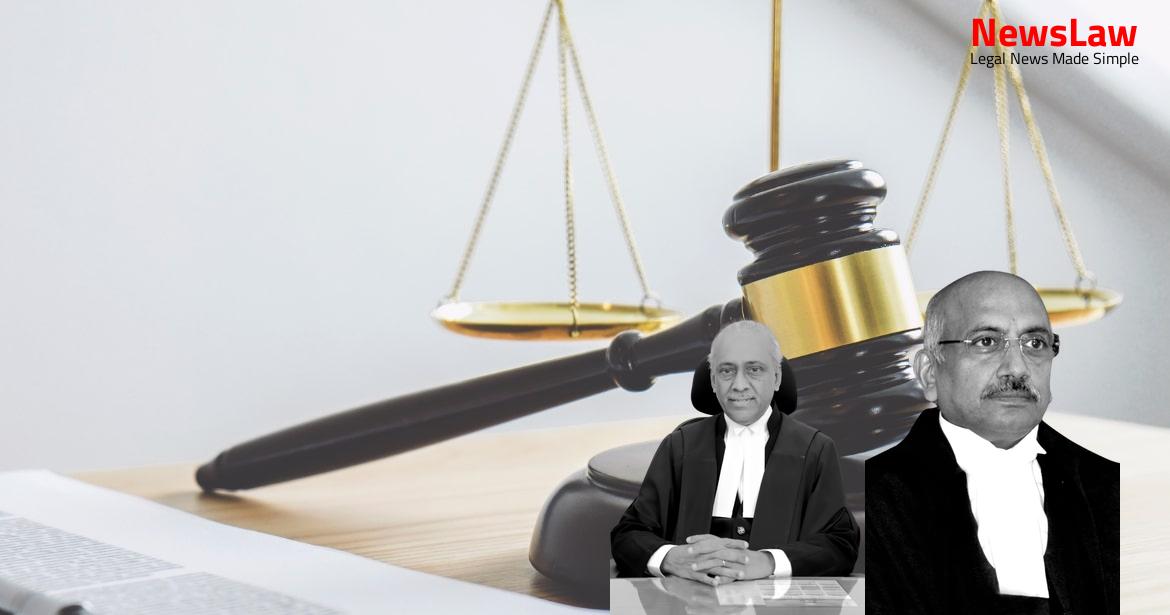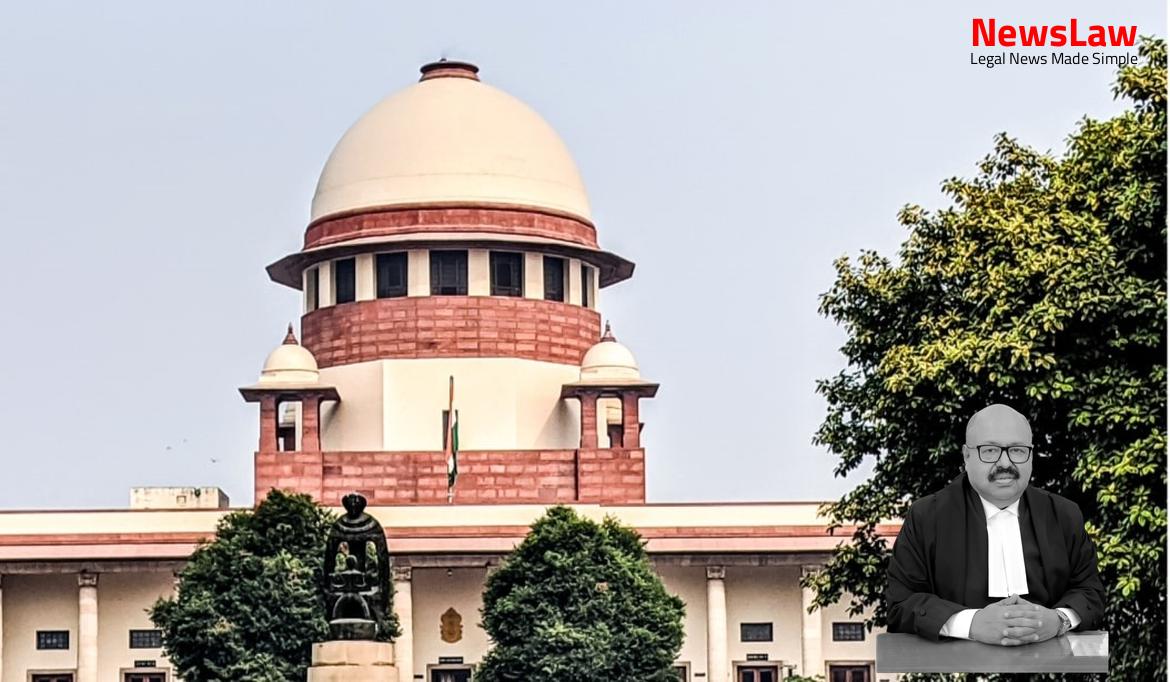Delve into a fascinating legal analysis conducted by the court in a recent redevelopment case. The court meticulously examined statutory provisions, analyzed evidence, and considered relevant case law to arrive at its decision. The application of the Rule of Law was central to the court’s conclusions. Join us as we unravel the complexities of this case and understand the legal principles at play.
Facts
- State of Haryana and Town Planning Authorities appeal against the judgment of the Division Bench of the High Court of Punjab and Haryana at Chandigarh.
- The High Court had set aside two notifications – one under the Controlled Areas Act and the other under the Urban Development Act, along with consequential actions.
- The 1st Respondent filed a writ petition contending various points, including agreements for purchase of land, development activities in the area, allotment of plots, and government notifications declaring the area as controlled.
- The 1st Respondent sought multiple reliefs in their writ petition before the High Court, including quashing of notifications under both acts and orders related to demolition of constructions.
- The High Court was to decide on the legality and validity of the notifications, show cause notice, orders, and the relevant sections of the Controlled Areas Act and Urban Development Act.
Also Read: Legal Analysis on Withdrawal from Land Acquisition
Arguments
- The learned counsel for the intervenors emphasized that the intervenors were allotted plots in a colony proposed by the first respondent.
- The intervenors are described as gullible members of the public who have lost their hard-earned money in this situation.
- It is requested that the Court consider the difficult circumstances faced by the intervenors and their plea for help.
Also Read: Interpretation of Amendments in Compassionate Appointment Cases
Analysis
- High Court’s findings of malafides in the statutory notification were deemed insufficient and unsustainable.
- The definition of ‘colony’ under the Haryana Development and Regulation of Urban Area Act was invoked, but not relevant to the Controlled Areas Act notification.
- The High Court’s focus on the development activities and the definition of ‘colony’ led to the notifications being set aside.
- The High Court did not find evidence of malafides despite suggestive circumstances.
- The High Court overlooked the developer’s agreements for land purchase and did not delve into the question of statutory provisions’ vires.
- The challenge to the notification under the Controlled Areas Act was questioned without legal basis, and the High Court’s order was deemed erroneous.
- Section 2(5) defines ‘controlled areas’ as areas declared under Section 4 to be controlled areas.
- Section 4(1) of the Act empowers the Government to declare certain areas as controlled areas.
- The Government can declare whole or part of an area within specified distances of towns, industrial estates, public institutions, or historical monuments as controlled areas.
- The declaration must be published in at least two newspapers printed in a language other than English.
- The distances specified are eight kilometers for towns and two kilometers for industrial estates, public institutions, or historical monuments.
- The notification under Section 4(1) can be issued based on the proximity of the area to the boundaries of the specified locations.
- Developers can apply for a license/permission and prepare a fresh layout to allot alternative plots to original allottees.
- Allottees have already approached consumer fora for refunds.
- Provisions in Controlled Areas Act and Urban Development Act can be utilized for redressal.
- Allottees are not without redemption options.
- The appeal is allowed, setting aside the High Court order.
- Parties can utilize the route available under both enactments for grievances.
- Allottees can pursue remedies against the first respondent.
Also Read: Legal Analysis on Settlement Claims in Money Suit
Decision
- The court considered the arguments presented by the parties in relation to the Rule of Law
- The court analyzed the applicable legal principles under the RPC
- The court provided a detailed examination of the evidence and relevant case law
- The court made findings based on the interpretation and application of the RPC
- The court concluded its analysis by applying the RPC to the facts of the case
Case Title: THE STATE OF HARYANA Vs. SHALIMAR ESTATES PVT. LTD (2021 INSC 733)
Case Number: C.A. No.-006901-006901 / 2021



